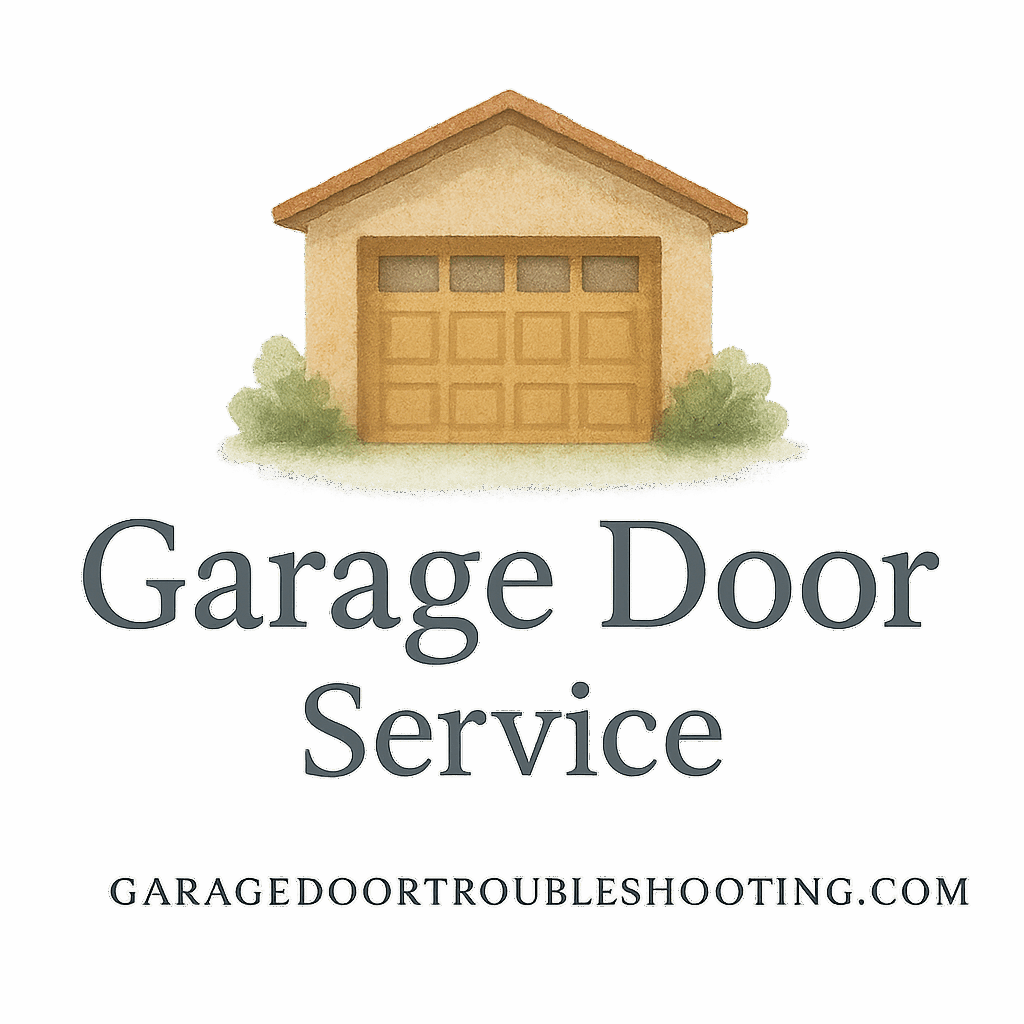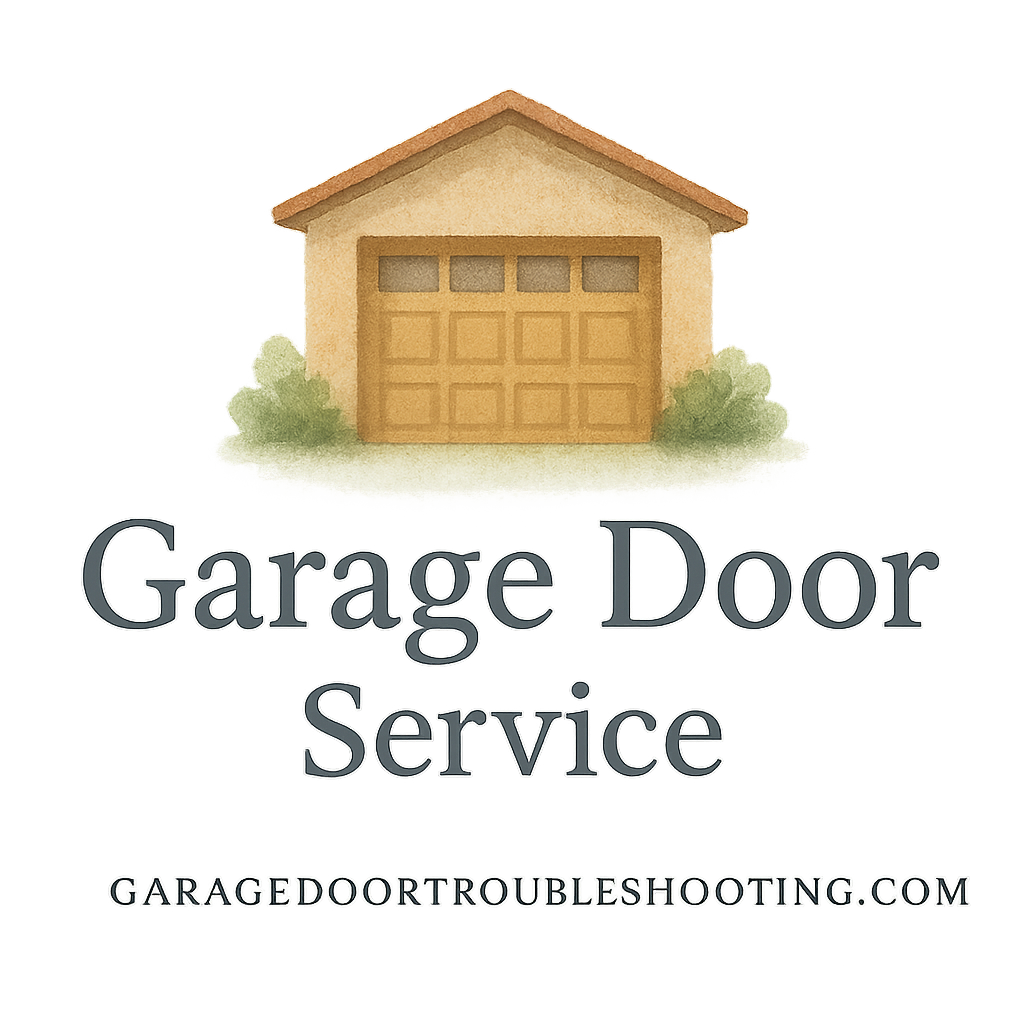Introduction: Why Garage Door Repairs Are Tricky
Garage doors might look simple from the outside—press a button, the door goes up, and you’re good to go. But behind that smooth motion lies a heavy system of springs, cables, rollers, and electronics. And here’s the catch: one wrong move in garage door repairs can turn into a costly or even dangerous mistake.
Whether you’re a homeowner trying to save money or a DIY enthusiast who enjoys fixing things around the house, understanding the common garage door repair mistakes is key. Before you grab your toolbox, let’s go through the 7 mistakes beginners make in garage door repairs and how you can avoid them.
Mistake #1: Ignoring Garage Door Safety Precautions
If there’s one rule with garage door repair, it’s this: safety first.
Common safety risks with garage doors
Garage doors weigh anywhere from 150 to 400 pounds. Add in high-tension springs and moving cables, and you’re essentially working with a loaded slingshot. Many homeowners underestimate this and start tinkering without the right gear—or worse, without unplugging the opener.
Why DIY garage door repair can be dangerous
According to safety experts, garage door accidents send thousands of people to emergency rooms every year. Broken fingers, back injuries, and even head trauma aren’t uncommon. This is why professional advice from resources like Garage Door Safety & Security should always be your first stop before touching a wrench.
Mistake #2: Misdiagnosing the Real Problem
Another common beginner mistake? Fixing the wrong thing.
Confusing opener issues with spring failures
A noisy or stuck garage door isn’t always about the opener. Sometimes it’s a worn spring, frayed cable, or bent track. Beginners often spend hours reprogramming their opener, when in fact, the problem is mechanical.
Importance of professional garage door repair guides
This is where step-by-step Garage Door Repair Guides come in handy. They help you identify whether the issue is electrical, structural, or mechanical before you waste time and money.
Mistake #3: Using the Wrong Tools for Garage Door Repairs
Let’s be honest—who hasn’t tried fixing something with a kitchen knife or a random wrench? But garage doors don’t forgive improvisation.
Why specialized tools matter
Torsion springs, for example, require winding bars. Using a screwdriver or pliers isn’t just unsafe—it can make the repair worse.
Risks of improvising with household tools
Think of it like baking bread without measuring cups. You might get it right, but chances are high that you’ll end up with a disaster. Similarly, garage door repairs with the wrong tools often lead to stripped bolts, broken parts, or even injuries.
Mistake #4: Attempting Garage Door Spring Replacement Alone
If there’s one repair you should think twice about, it’s springs.
How garage door springs work
Springs are what balance the weight of the door. Without them, the motor couldn’t lift it.
Why spring tension makes them dangerous
Beginners often underestimate spring tension. A spring under pressure can snap, sending metal whipping through the air. That’s why experts classify this under Dangerous Repairs. Unless you’ve got training, this is one job best left to a Garage Door Services Professional.

Mistake #5: Skipping Regular Garage Door Maintenance
Think of garage doors like cars—they need tune-ups.
Signs of poor maintenance
Rusty rollers, noisy tracks, or slow openers are all signs your door is begging for attention. Ignoring them not only shortens the door’s lifespan but also raises the risk of sudden breakdowns.
Maintenance tips every homeowner should follow
Lubricate moving parts, tighten loose bolts, and check the balance regularly. For a step-by-step checklist, check out these Garage Door Maintenance Tips. Even a 15-minute monthly check-up can save you from costly repairs.
Mistake #6: Choosing Cheap Parts Over Quality Components
How low-quality parts reduce lifespan
It’s tempting to grab the cheapest rollers, hinges, or remotes you can find online. But here’s the reality: low-quality parts wear out faster, leading to repeated repairs.
When to invest in professional-grade materials
Professional-grade parts may cost more upfront, but they last longer and improve performance. Think of it as buying running shoes—you can go cheap, but your knees will pay the price.
Mistake #7: Not Calling a Garage Door Services Professional
When DIY repairs cross the line
Some repairs—like realignment or lubrication—are fine for DIY. But when springs, openers, or cables are involved, it’s time to call in the pros.
How to find reliable garage door service providers
Check credentials, read reviews, and don’t be afraid to ask questions. A trustworthy Service Provider won’t shy away from explaining their process. For a deeper look at choosing wisely, see Garage Door Services Professionals.
Extra Beginner Pitfalls to Avoid
Neglecting to childproof garage doors
If you’ve got kids, safety multiplies. Use sensors, locks, and settings to keep them safe. The Childproof tag covers strategies every family should know.
Failing to create a maintenance plan
A one-time tune-up isn’t enough. A solid Maintenance Plan ensures your garage door lasts for years.
How to Repair Smarter: Garage Door Installation & Maintenance Advice
Planning repairs step by step
Before diving in, create a repair roadmap. The Planning stage helps you avoid rookie errors.
Why installation knowledge helps with repairs
Understanding the basics of Garage Door Installation Advice helps you troubleshoot repairs more effectively.
Key Takeaways for Homeowners
Garage door repairs can be rewarding if done right—but risky if rushed. The main lessons? Respect safety, use the right tools, don’t skimp on quality, and know when to call a pro.
Conclusion: Safety and Smart Choices in Garage Door Repairs
At the end of the day, your garage door is more than just an entry point—it’s part of your family’s safety. Beginners often fall into the trap of overconfidence, but by learning from these 7 mistakes in garage door repairs, you’re already ahead of the curve.
Play it smart: maintain regularly, invest in quality, and don’t hesitate to bring in a Professional when needed. Your garage door will thank you with years of reliable service.
FAQs
Q1: Can I fix a garage door without professional help?
Yes, small issues like lubrication or tightening bolts can be DIY. But anything involving springs or cables should be left to experts.
Q2: How often should I inspect my garage door?
A monthly visual check and yearly professional inspection are recommended.
Q3: What tools do I need for basic garage door repairs?
Winding bars, socket sets, pliers, and lubricants are must-haves for safe DIY work.
Q4: Are garage door springs really that dangerous?
Absolutely. They store massive amounts of energy that can cause serious injuries if mishandled.
Q5: How do I know if my garage door needs replacement or repair?
If repairs become frequent or costs outweigh benefits, check the New Door option.
Q6: What should I ask a garage door service provider before hiring them?
Ask about experience, warranties, and service contracts. Check out the Service Quality tag for more.
Q7: Is DIY garage door repair ever safe?
Yes, but only for simple tasks. For complex jobs, calling a Garage Door Service Professional is the safest bet.


